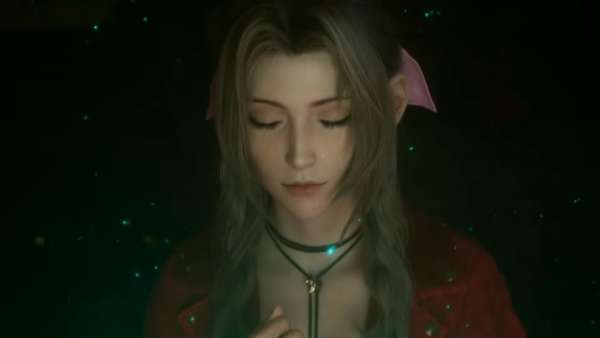As the grand finale to the Final Fantasy XIII trilogy, the somewhat unhelpfully titled Lightning Returns: Final Fantasy XIII tries to improve upon the issues of the games it follows. After the linearity of XIII, and the back and forth muddle of XIII-2, Lightning Returns successfully combines the two into a more focused experience, but that’s not to say that it isn’t without its problems.
Lightning Returns’ story kicks off 500 years after the events of Final Fantasy XIII-2. After sleeping away the years in Crystal Stasis, Lightning is awoken by a god, Bhunivelze, and told she is his chosen saviour. As a dark energy called Chaos threatens to consume the world forever, Lightning must collect peoples’ souls so that they can be reborn in the new world that Bhunivelze has promised to create. In return, Bhunivelze will resurrect Serah, Lightning’s sister.
To help Lightning on her mission, Bhunivelze uses Lightning’s old companion, Hope, as a host to impart his knowledge into. Hope resides in a floating structure called the Ark, which is used as a base of operations. Here, time stands still, while Yggdrasil, the tree of life, blooms. Lightning must offer the souls she collects to the sacred tree at the end of every day, to increase the time she has before the world is due to end.
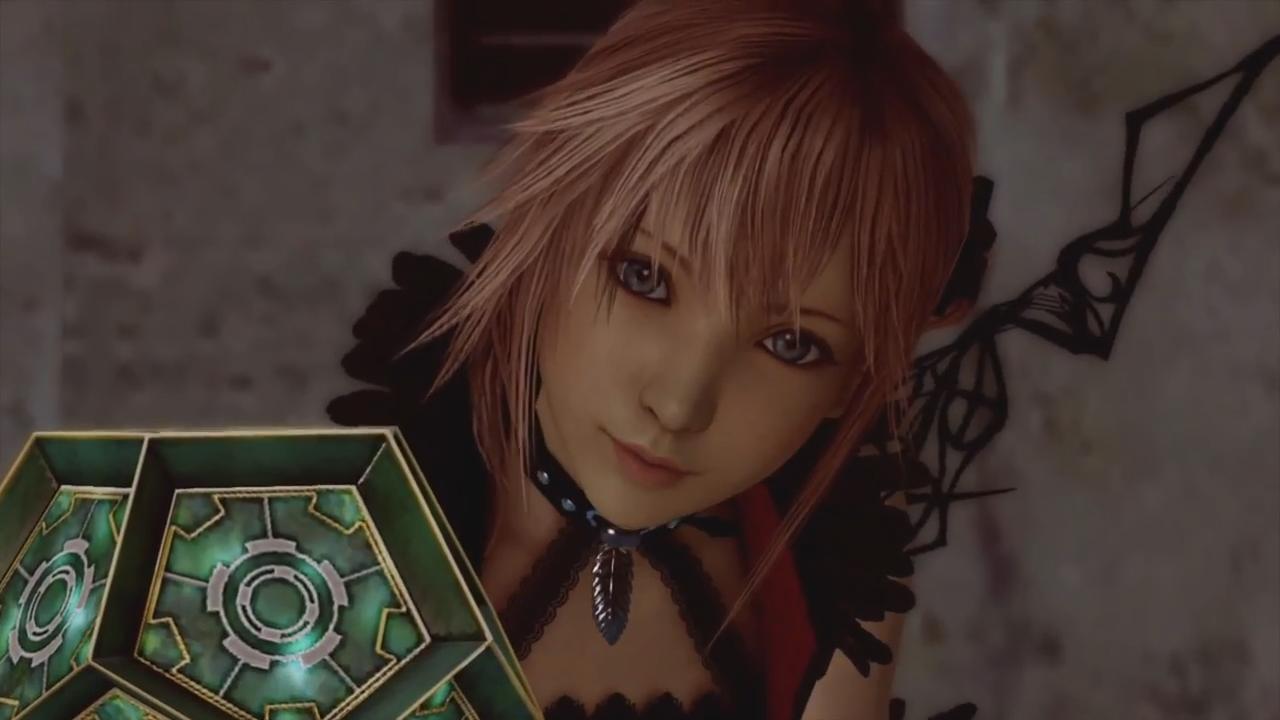
Lightning Returns is heavily weighed down by the mountains of backstory that comes with it, and it is evident from the get go. The game starts very slowly with huge amounts of explanation and tutorials required to get you into the swing of things. This was almost to be expected considering the madness left behind by the other games in the trilogy, but there was a small amount of hope that everything would work out in the end. Lightning Returns does make more sense now that all the Fal’Cie and L’Cie riddles are out of the way, but in the grand scheme of things it’s still just as peculiar as the games that came before it.
While the story is bit of an irredeemable mess if you actually try to understand it, Lightning Returns is thankfully saved through its gameplay. As a new feature to the series, Lightning Returns runs on a 24 hour clock system, with a set number of days available until it’s the end of the world and game over. It is refreshing to play against the clock as it is a mechanic that doesn’t appear too often in any game, let alone a Final Fantasy title. There are moments when you will have free time to browse shops and explore, and others when you will find yourself rushing to complete tasks before your time is up. It is an enjoyable system that you will find both relaxing and intense, keeping the game interesting and your attention locked.
The majority of gameplay circulates around Lightning needing to help people with their problems to release their soul. To do this, Lightning will complete range of quests, from finding a lost doll that was swallowed by Chaos to going on a date with a man who recently lost his wife. It sounds a little bizarre, but once you’re in the game these unusual and seemingly menial tasks actually feel quite normal and rewarding.
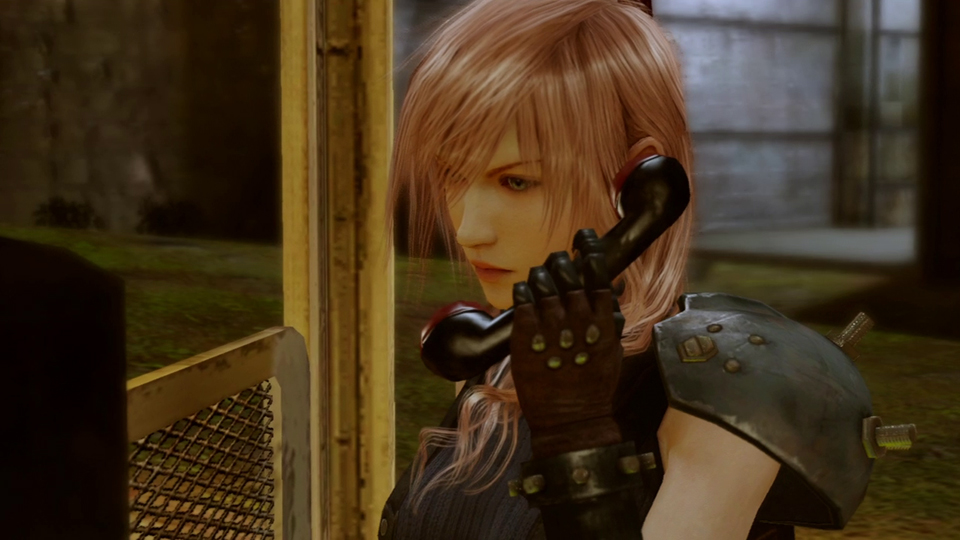
While so many fetch quests may put some off, they are surprisingly simple to keep up with and complete. Often you will find an item someone is looking for through general exploration before they’ve even requested you get it. This helps to save time and keeps the game moving forward rather than constantly backtracking to hunt things down, which is crucial with the clock ticking away. However there will be times that you will have to do some leg work, and with no quest markers to guide you, you may get irritated by the hunt.
To complement the clock system, many quests are also only available at certain times of day. This can sometimes be a pain when you have a lot of missions to complete between a few specific hours, as you will be rushing about trying to get things done before your targets move on. A huge amount of the quests seem to happen in the evening while nothing occurs in the early hours, so it would have been nice if they were more evenly distributed across the day. Luckily you can use a power called Chronostasis to freeze time for a short while, which is particularly useful as the clock ticks ever closer to 6am when you have to return to the Ark.
While Lightning Returns is generally immersive as you run about completing quests and dealing with time, there are moments that you get knocked out of the experience. Many major events in the story feel like loose ends rather than anything substantial, while almost every old comrade you stumble upon hasn’t changed at all in the hundreds of years that have passed, which feels very unnatural. Snow is the exception to the rule. He’s the only one that’s really gone through any character growth, or managed to pick up a new outfit, and he feels a lot more genuine because of it. It’s a shame that an equal amount of effort was not put into the other characters that you meet, as it is stifling to see the same old faces from two games ago no different for their trials.
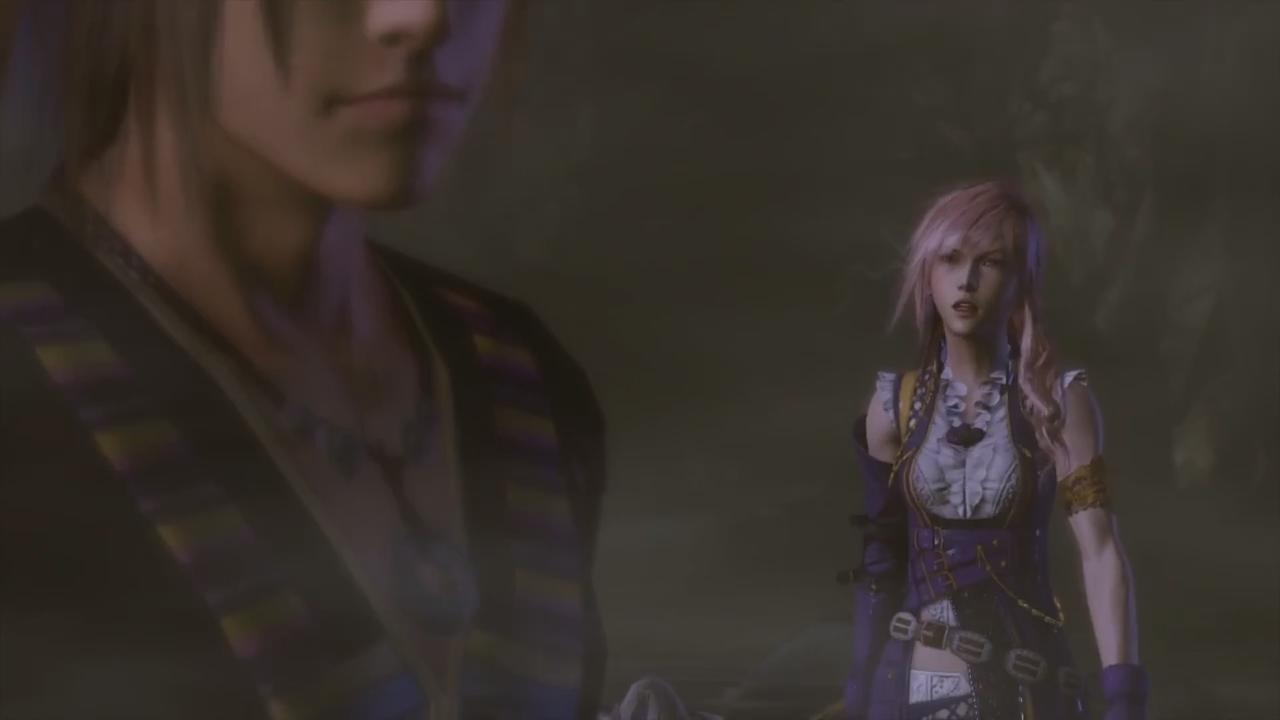
Though the rest of the game is generally strong but littered with problems, the combat and customisation systems are definitely where Lightning Returns shines the brightest. The new battle system circulates around Schemata – somewhat similar to Paradigms from Final Fantasy XIII. You have three outfits, or Schema, which you can set up and switch between at the tap of a button in the midst of battle. Each Schema has its own ATB gauge that is used up as you attack, so you need to make all three balanced and switch between them regularly as opposed to focusing on creating one powerful outfit. Combat is very fast and fluid as you bounce between attacking your foes, switching Schema, and defending at the crucial moment, all in real time. It is an immensely fun and gratifying system, that puts all the power in your hands.
When setting up Lightning’s Schema, you choose a base outfit, known as a Garb, and build it up with a weapon, shield, accessory, and up to four attacks. You can either buy these components, or earn them from quests and drops from monsters. Preparing Lightning for battle will take up a good chunk of your time if you want the perfect set up, while the huge amount of customisation options on offer means you can revise your strategies as much as you like to fit the situation. However, you can get away with not paying excruciating detail to your Schemata if it doesn’t really interest you. Making sure you have the strongest of everything equipped and a variation of attacks will cover you for the most part, though on higher difficulties more strategy will be required.
As enjoyable as the combat is, due to the mechanics of Lightning Returns, fighting has become somewhat redundant. In this entry you no longer improve stats by gaining experience through battle, but by completing quests. This means it’s a waste of time to fight that monster running at you unless it has a drop that you’re after, and honestly there’s only so many Mediguards that you need. For a game that has such a great combat system, it is a strange move to make non-event battles so pointless.
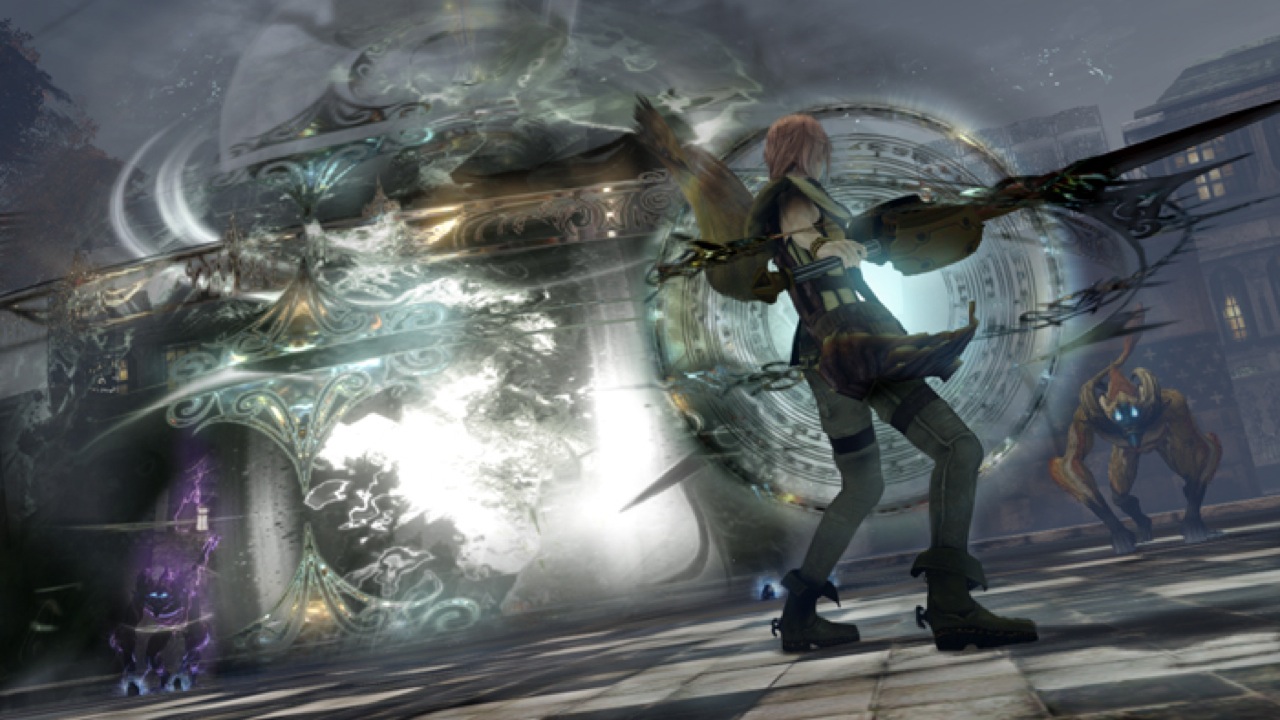
Lightning Returns also flourishes when it comes to environmental design. Though you only have four main areas to explore, they are put together wonderfully and each has a very distinct feel. Whether you’re in the wastelands of the Dead Dunes or the lush fields of Wildlands, everything looks and feels fantastic. The two cities in particular, Yusnaan and Luxerion, are a joy to explore, and it’s the little things that make it so impressive. Walk down a street and you’ll hear a busker singing. Draw your weapon and people will scream and run away. When monsters populate the streets in the evenings, citizens will shout at you for help. Life has been etched into every corner of the game, and it makes for a great experience.
Similarly, the soundtrack is beautiful, with a mix of classic tracks from the previous games to spark some nostalgia and some new ones for you to enjoy too. The voice acting is also commendable, but unfortunately the dialogue is sometimes very awkward which does break the immersion. Characters often state the obvious or blurt out whatever is on their mind in an over-dramatic way rather than allowing players to draw their own conclusions. Hope in particular just regurgitates information, and while that’s kind of the point of him being there, it could have been done in a more subtle way. This is not a new problem in the Final Fantasy XIII series, but that doesn’t excuse the fact that it’s still there.
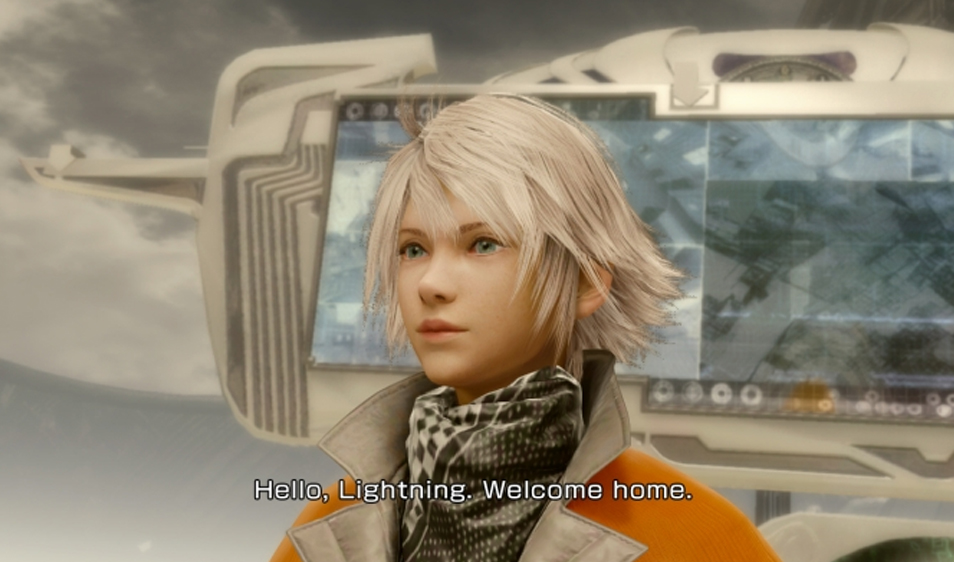
That said, subtlety is not something Lightning Returns does well in general. Almost everything is spelt out for you and revealed early on, taking out all the guess work for who it is you might stumble into next or how the story will end. This make the narrative feel basic at times, despite the quite elaborate overarching themes that are being presented. The only real mystery revolves around Lumina, Serah’s doppelganger, which will require a little piecing together before you understand her purpose. It may have been intentional to not make the entire game a brain-bender, but all the obvious explanations become quite grating.
Overall, Lightning Returns is an entertaining game, but is far from seamless. For the most part it is a beautiful, immersive and fun experience, but it is unfortunately dragged down by some awkward moments and a slow start. Though Square Enix have still not have perfected the Final Fantasy XIII formula, they have managed to produce an enjoyable end to Lightning’s journey. If you liked the previous games in the trilogy then it is well worth picking up Lightning Returns to finish the story; just don’t expect to be blown away by what you find.

